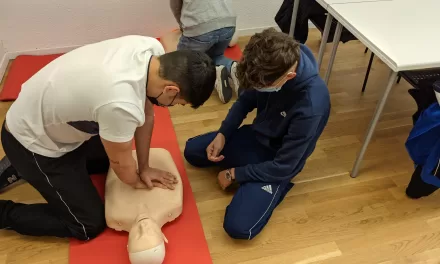Oslo, Norway – In a world where time is a precious commodity, the concept of “micro workouts” is gaining significant traction. Researchers are finding that even brief periods of high-intensity physical activity can yield substantial health benefits, both for individuals and society.
NTNU exercise physiologist Ulrik Wisløff, a leading expert in the field, attests to the growing popularity of this approach. “Micro workouts have become very popular,” he states, following the release of his book, “Micro workouts—7 weeks to boost fitness and strength,” co-authored with Atefe R. Tari.
The foundation of this approach lies in extensive research, spanning nearly two decades. Wisløff’s work, drawing from the comprehensive HUNT study, revealed that just 30 minutes of high-intensity cardiovascular exercise per week can halve the risk of premature death from cardiovascular disease, compared to longer durations of moderate-intensity exercise.
“The key word is high intensity,” Wisløff emphasizes. “You can get by with just a few minutes, as long as your heart rate is high enough.” Recent studies, including a 2022 UK study, suggest that as little as 4.5 minutes of high-intensity exercise, one to two days a week, can be effective.
An article published in Nature Medicine further supports this notion, advocating for doctors to encourage even minimal physical activity in inactive patients. “We believe it is motivating for people to know that even the small amount they manage to do, going from zero to a little, actually has an impact on their health,” says Tari.
The focus on high heart rate stems from its direct impact on cardiovascular health. “The heart is the engine that pumps blood around the body. This engine must be exercised, and the only way to do so is by increasing your heart rate,” explains Wisløff.
However, micro workouts aren’t limited to cardiovascular exercise. Strength training is equally crucial. “We need to raise more awareness about the importance of strength training,” Tari states, highlighting the disproportionate focus on strength training among younger individuals compared to older adults.
The researchers advocate for simple, accessible strength training routines, emphasizing core muscle strength. “Strength training is something everyone needs throughout their lives,” Tari says. “It actually makes strength training even more motivating—you quickly notice results and can achieve a lot by doing just a little.”
The potential societal benefits are significant, with improved muscle strength reducing the risk of falls and related healthcare costs.
While the Norwegian health authorities recommend 150 to 300 minutes of moderate-intensity exercise or 75 to 150 minutes of high-intensity exercise per week, Wisløff and Tari believe that less is sufficient for general health maintenance.
Practical Micro Workout Examples:
- Cardio: 10-15 minute sessions, including a 3-minute warm-up, 6 minutes of high-intensity exercise, and a cool-down.
- Strength: 10-15 minute sessions, twice a week, focusing on large muscle groups with exercises like squats, lunges, and push-ups. Core exercises like planks and sit-ups are also recommended.
Disclaimer: This article is based on research findings and expert opinions. It is essential to consult with a healthcare professional before starting any new exercise program, especially if you have pre-existing health conditions.1 Individual results may vary. The information provided should not be considered a substitute for professional medical advice.(Journal information: Nature Medicine )












